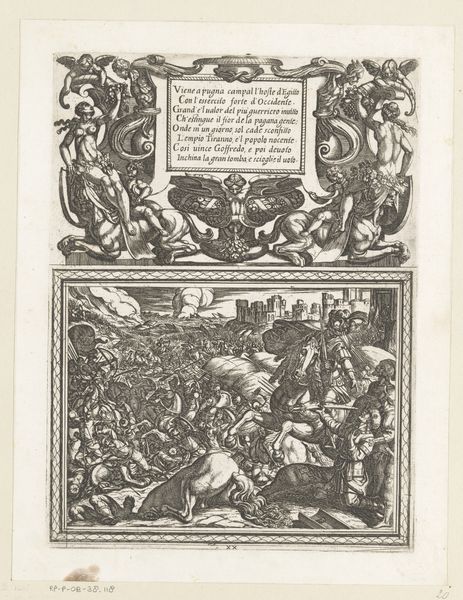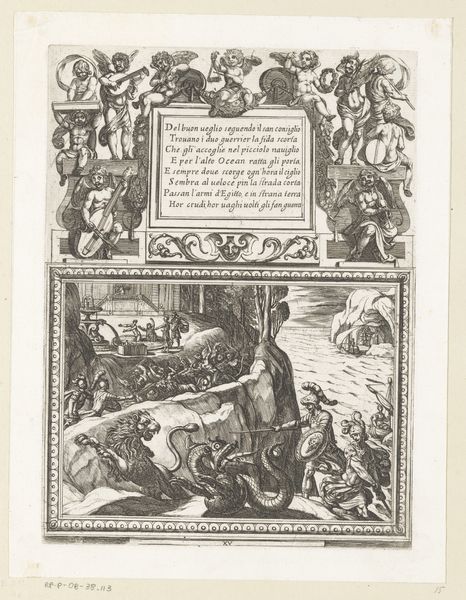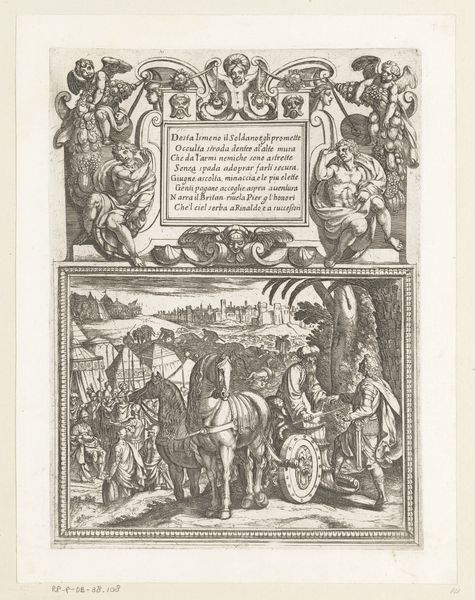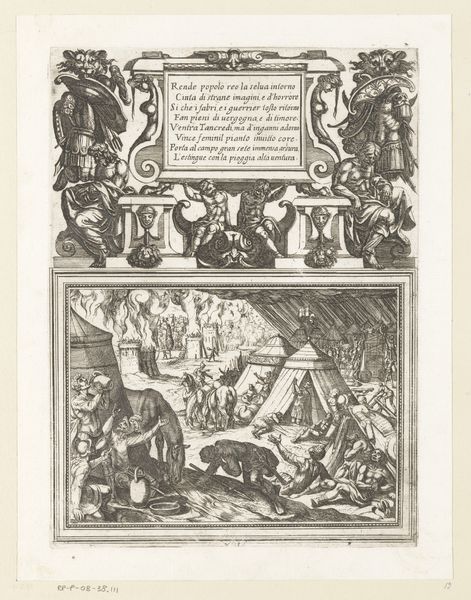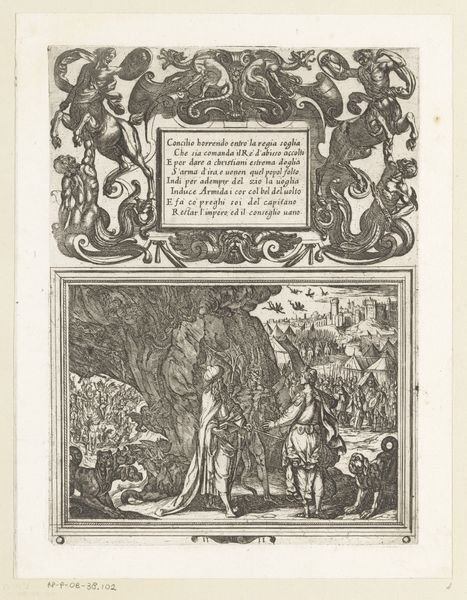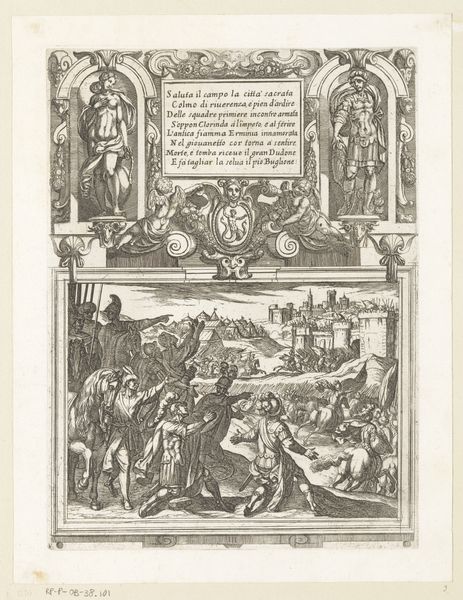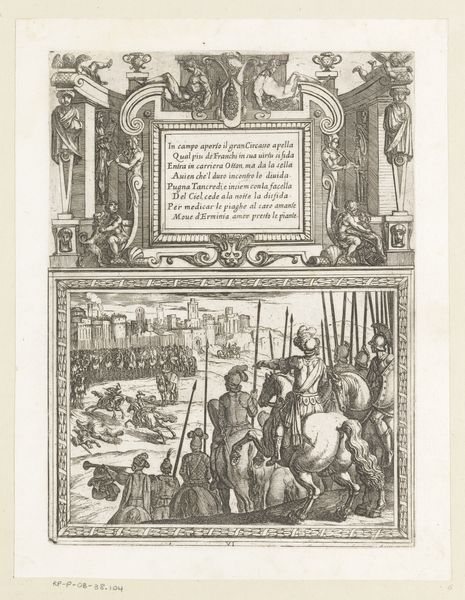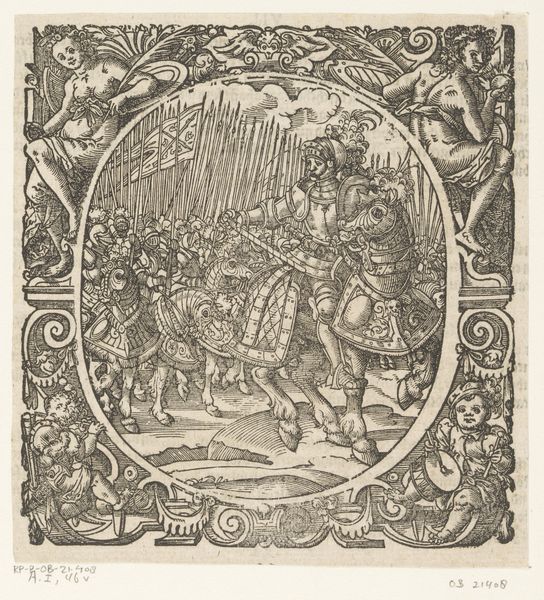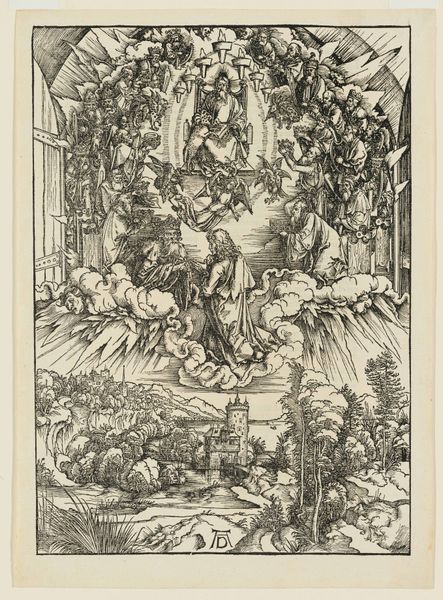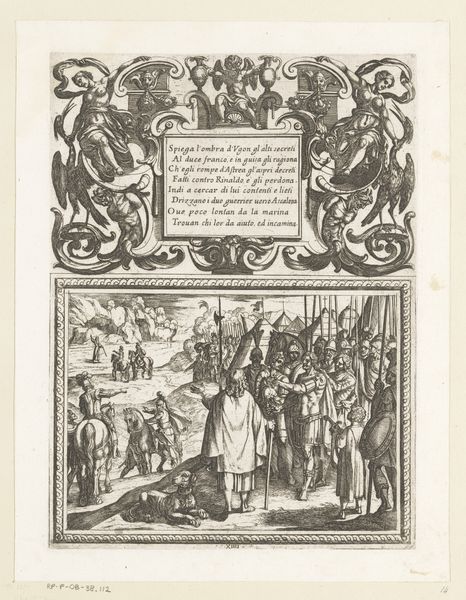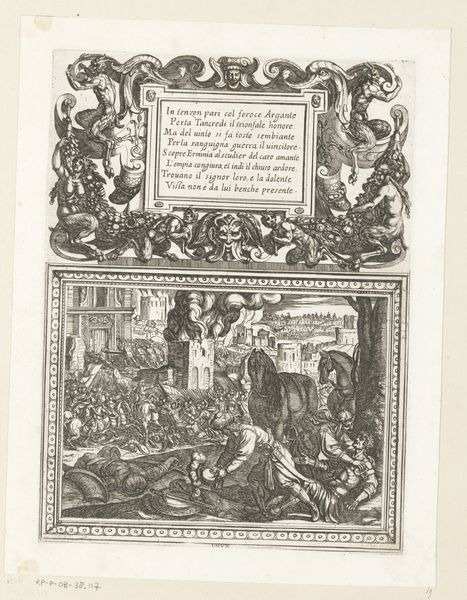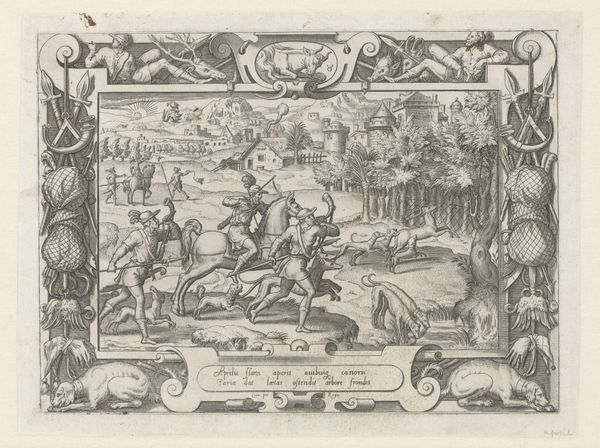
Illustratie bij Canto IX van Tasso's 'Gerusalemme Liberata' 1565 - 1630
0:00
0:00
print, engraving
# print
#
old engraving style
#
traditional media
#
mannerism
#
figuration
#
line
#
history-painting
#
italian-renaissance
#
engraving
Dimensions: height 275 mm, width 204 mm
Copyright: Rijks Museum: Open Domain
Editor: This engraving by Antonio Tempesta, dating from 1565 to 1630, is titled "Illustration for Canto IX of Tasso's 'Jerusalem Delivered'." It's incredibly detailed, but quite chaotic to my eye, full of figures in battle. What stands out to you in this piece? Curator: The chaos is definitely part of the point. This image is soaked in the visual language of conflict, of disrupted order. But let's think about the frame itself. Do you notice the figures incorporated into it? Editor: I see mythical creatures...part woman, part fish, almost? They look rather decorative. Curator: Exactly. They represent a kind of pre-Christian, even pagan, visual vocabulary. Now look back at the battle scene. What does the clash of these iconographies—the classical frame versus the Christian subject matter—tell you about the culture that produced it? Editor: It's a tug-of-war, maybe? The Renaissance re-embracing classical ideals while still holding onto religious narratives. Like two sets of cultural memories wrestling for dominance? Curator: Precisely. The artist is grappling with how these symbols shape identity and belief. How the weight of history bears down on the present. This battle is more than just armies clashing; it's a cultural and psychological struggle made visible. Editor: So, it's about the layering of meaning, how the past continues to inform the present through images. I see that much clearer now. Thanks! Curator: Indeed, every line carries a story, every symbol a memory. The trick is learning how to read them.
Comments
No comments
Be the first to comment and join the conversation on the ultimate creative platform.
